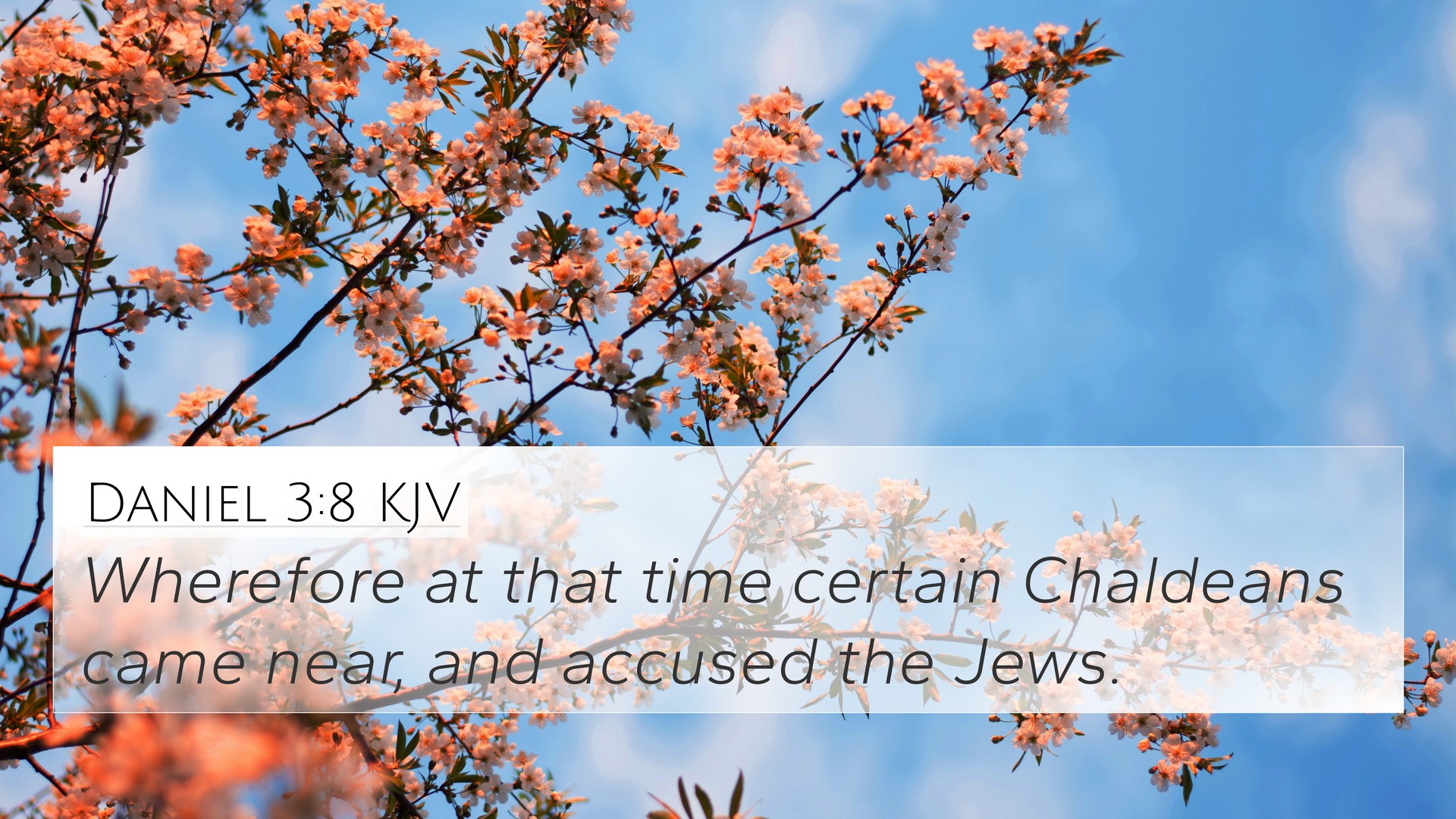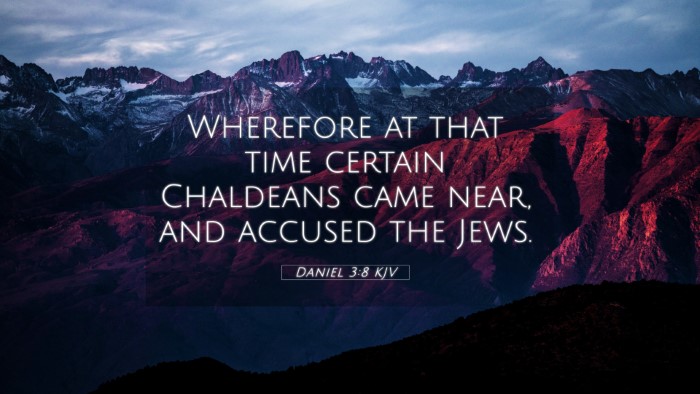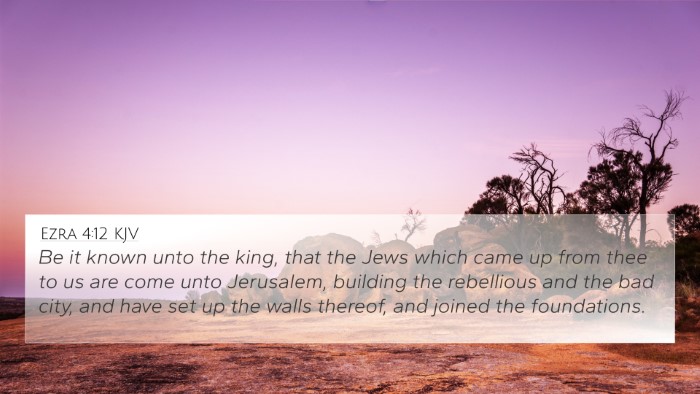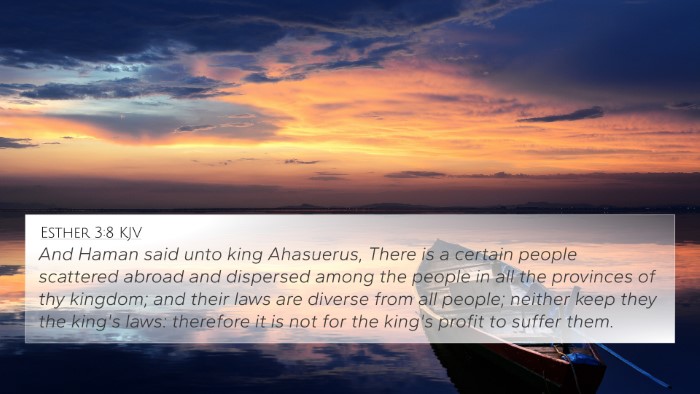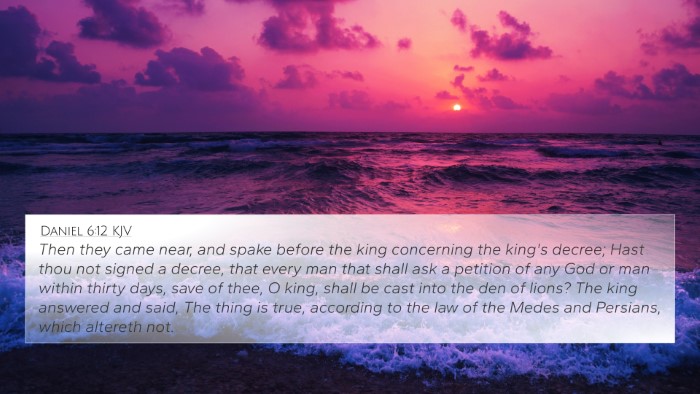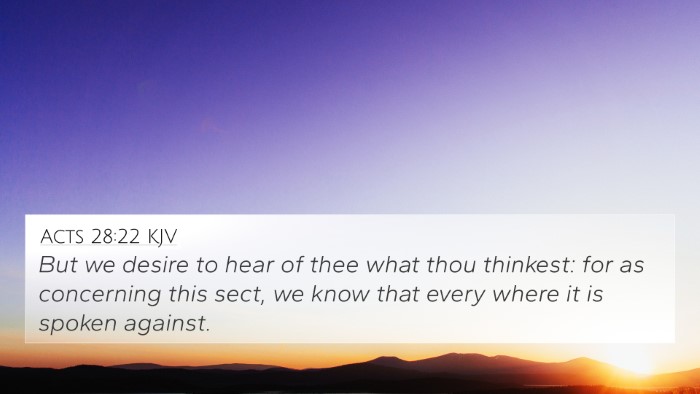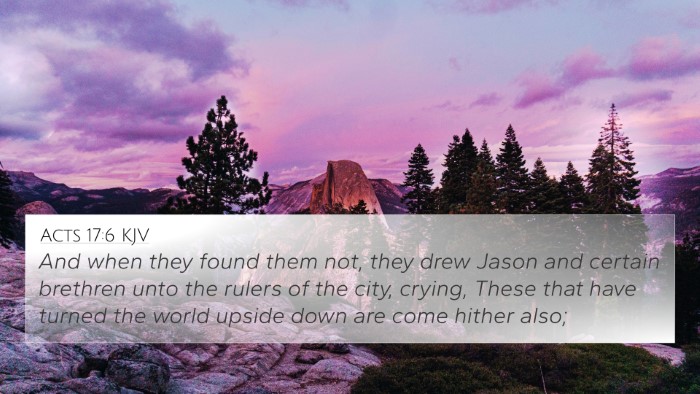Understanding Daniel 3:8
Daniel 3:8 presents a vivid account of the events that transpired when the Jews were challenged to bow down to King Nebuchadnezzar's golden image. This verse marks a significant moment of conflict between loyalty to God and submission to earthly authority.
Summary of Daniel 3:8
In this passage, "Wherefore at that time certain Chaldeans came near, and accused the Jews," we see a group of Babylonian officials seeking to undermine the faith of the Jewish people. Their actions set the stage for the trial of Shadrach, Meshach, and Abednego, who refused to worship the image.
Commentary Insights
Matthew Henry
Matthew Henry notes that this accusation stemmed from envy and malice. The Chaldeans, driven by jealousy of their success, took the opportunity to point out the disobedience of the Jews to the king's decree. Henry emphasizes the importance of standing firm in faith, especially in the face of persecution and wrong accusations.
Albert Barnes
Albert Barnes highlights the social and political dynamics at play, indicating that the Chaldeans sought to take advantage of the loyalty that Shadrach, Meshach, and Abednego had earned. Barnes discusses how this reflects the broader theme of justice versus injustice, illustrating the dangers of envy and competition in governance.
Adam Clarke
Adam Clarke offers a thorough analysis of the term "accused," pointing out that it speaks to the calculated efforts of the Chaldeans to frame the Jews. Clarke’s insights encourage readers to view such instances as reminders of the spiritual warfare believers face, as they navigate authority and their allegiance to God.
Key Themes
- Faith and Loyalty: The refusal of Shadrach, Meshach, and Abednego to bow served as a profound testament to unwavering faith.
- Persecution: The actions of the Chaldeans reflect the trials faced by believers, provoking vivid discussions around the nature of opposition in a secular world.
- Jealousy and Injustice: The motivations behind the accusations illustrate how jealousy can lead to injustices, baring witness to moral failures in society.
Bible Verse Cross-References
- Exodus 20:4-5: The command against idolatry directly relates to the refusal to bow before the image.
- Daniel 1:8: Establishes the character of Daniel and his friends as devout Jews committed to God's laws.
- Revelation 13:15: Discusses the pressure to worship a false image, paralleling the trials faced by Shadrach, Meshach, and Abednego.
- Acts 5:29: The apostles’ stand against authority reflects the same theme found in Daniel’s narrative.
- Matthew 10:28: Encouragement to fear God over man, aligning with the devotion shown by the three Jews.
- Isaiah 43:2: The assurances of God’s protection amidst trials is illustrated through their experience in the fiery furnace.
- Philippians 4:13: Their steadfastness resonates with the idea of strength through faith.
Connections Between Bible Verses
In exploring connections between Daniel 3:8 and other scriptures, we find a cohesive narrative of faith prevailing over idolatry. For instance, Exodus 20:4-5 establishes the foundation for understanding the gravity of worship, while Revelation 13:15 offers a contemporary perspective on the implications of false worship.
Thematic Bible Verse Connections
Through a comparative Bible verse analysis, the themes of faith, audacity in confrontation, and divine protection emerge not only in Daniel but across the Scriptures. Each highlighted verse fortifies the resilient spirit demonstrated by the Jews in their trial against overwhelming odds.
Cross-Referencing Biblical Texts
Understanding Daniel 3:8 becomes enriched through scriptural cross-referencing. Tools for Bible cross-referencing, such as a Bible concordance or a Bible cross-reference system, can deepen insights into the narrative and allow for a more comprehensive understanding of the text. By identifying connections between Old and New Testament scriptures, the overarching themes of perseverance and integrity in faith are amplified.
Conclusion
The refusal of God’s faithful servants to bow before an idol not only serves as a historical account but as a resounding message for believers today. By employing effective cross-referencing and engaging in deeper study of related scriptures, individuals can uncover the rich narrative woven throughout the Bible, gaining insights that guide their faith journey.
